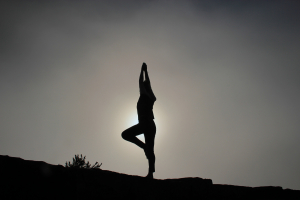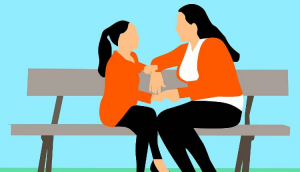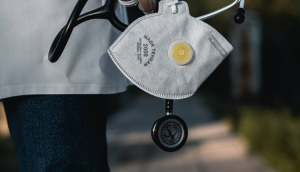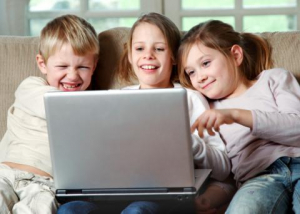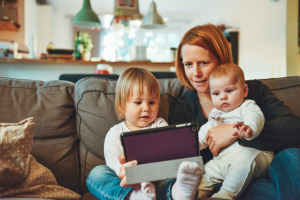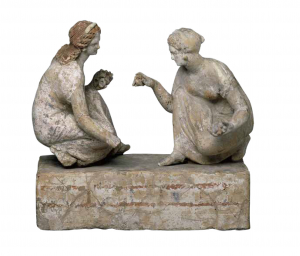LIFE & CULTURE
XpatAthens
March 25th Amid Covid-19 - A Reason To Smile
- The Goo Goo Dolls’ lead singer held a porch concert to help local small businesses impacted by the coronavirus.
- Formula 1 race car teams work with UK authorities to repurpose their expertise to build ventilators, which are required and in short supply for those with serious cases of COVID-19.
- Fashion designer Christian Siriano and Dov Charney repurpose their workshops to make face masks and medical gowns.
- 300 Chinese doctors and 31 tons of medical supplies arrived in Italy from China to help the Italians battle the coronavirus.
- Spanish police sing to families in lockdown in Mallorca.
- L’Oreal starts a solidarity initiative and is arming health care, pharmacy, and food distribution workers with hand sanitizer to help fight the coronavirus.
- Tesla CEO Elon Musk is gearing up to donate 250,000 N95 face masks for hospitals and to begin production of ventilators with the goal of having 1,000 ready by next week.
The Coronavirus: A Yogic Perspective
It is a serious threat, less because of the raw numbers involved (as of March 24, 2020, there are more than 423,600 known infected cases with a global population of over 7 billion people) but more because the trajectory is dangerous, the spread is exponential and the growth occurs very quickly.
The virus contained would not have been that big of a deal. The virus spreading is a big deal. It is now clear the virus is spreading far and wide quickly. The main issue is that the hospitals in affected areas don’t have the capacity to treat the huge spike in coronavirus cases. We have already seen this in Italy: people are dying because there are not enough ventilators and other medical resources to keep them alive. This is essentially a timing issue.
- I’m buying toilet paper, bottled water, face masks, surgical gloves, and rations for the next six months. I’m hiding all these rations and developing a plan to fend off my neighbors. If I hear that hospitals are short of face masks and surgical gloves, I’ll ignore it. I need to keep these things for the future. Things are probably going to get ugly–I need to take care of myself first and worry about my community later.
- The virus is increasing in my area so I’m going to leave and go outside the city to sit things out for a while. And if the new place gets too many cases of the virus, I’ll leave there too…My plan will be to stay a step ahead of the virus and leave whenever I notice the number of confirmed cases is getting high.
- I’ll check the local and national news from the big mainstream sources every hour to get an update on the spread of the virus. I’ll update my Facebook feed each hour with whatever I learn. And I know if I add lots of exclamation marks, more people will read what I wrote so I’ll make sure each post starts with "READ THIS!!!!!!!!!!!!".
- I know the virus can travel through the air so I will stay indoors with the windows closed and the blinds down until the virus is contained. Despite the fact I have a private, enclosed backyard, I won’t use it or even look at it. You just never know..
- Self-isolate/shelter-in-place means I can work from home. Apart from that, I can still go out and do my regular things. I’ll try to rally my running group for a run and since most restaurants are closed, I’ll invite my friends over to my house for dinner. If I do this right, shelter-in-place can be a great socializing tool!
- I feel 100% fine. There is no way I have the virus. And if I get the virus, then I get the virus. I’ll risk it. I’m healthy and young so I’m going to carry on with my business as usual. Vulnerable people should stay in but since I’m not in that category, I’m going to take a more relaxed attitude.
- I don’t personally know anyone who has the virus. I understand it is an issue, but I don’t think I have it in my community or my social groups. And keeping our mental wellbeing is important too. I’m going to continue to hold my events until someone I know falls ill.
- I’m taking self-isolation seriously and not going out unless it is a mission-critical task. I’m keeping my immune system healthy, keeping a rhythm to my days and staying as productive as possible. This too shall pass, but it might be months, not weeks…
- I’m studying the virus growth trends but not obsessively. I want to stay informed, but I understand focusing on bad news I can’t control over an extended period of time is bad for my immune system. Instead, I’m exercising extreme self-care. I’m eating well. I’m making my environment comfortable and nurturing. I’m working out and staying connected with people who are close to me through video and calls. In fact, I’ve even reconnected with some people I haven’t spoken with in a while. I continue to be mindful of my news sources as I read about the virus. I’m not getting pulled into sensationalism by going mainstream news sources to get an update on the coronavirus. That would be misguided. I’m triangulating sources between the Center for Disease Control and Prevention, the World Health Organization and my own county or country’s health organization to stay current on the spread of the virus. And when I want to hear a doctor’s perspective, I follow someone who is posting on the situation daily, like Dr. John Campbell.
- When I get invited to do something by someone else, I remind them that I am staying in because I understand the gravity of the situation. I remind them:
2) The virus can live on surfaces in excess of 72 hours and
3) The virus can pass through the air for over 3 hours.
I understand that unless I’ve extremely careful, I might start the day without the virus and end it with the virus because of someplace I went or something I touched.
I don’t yell and scream at my friends who want to get together, but I help them understand the situation more clearly. And most importantly, I am staying in.
- I understand the virus can pass through the air but I’ve done my research carefully and I understand I go outside, alone and maintaining appropriate distance from other people. I’ll try to use my own yard as much as possible but if I exercise the right precautions, I understand I could take a walk outside while minimizing my risk.
- I’m trying to find ways to be useful and of benefit during this period. Lots of people are struggling. I wonder if I can help them.
- I’m realistic this virus has ushered in a new way of life. I’m focusing on how I can succeed and thrive in this new environment. I’m researching new ways to do business online, and I’m using this time to sharpen my skills. I’m not focusing on when we can get back to “business as usual” because I understand there no longer is business as usual. I’m staying open and alert for opportunities that are heading my way as a result of this new world we are in.
This content was originally published at LynnRoulo.com.
How To Talk To Your Children About The Coronavirus
News about the coronavirus is everywhere, and children hear it all. Our new living conditions, the fear of what has already happened topped with the fear that "we haven't seen the worst yet," affect them directly. You need to talk to your child in a way that makes him or her feel safe so that they don't get more scared than they may already be. So how are you going to do this?
First, you start with an open discussion about the virus. After all, your child does see people in masks and gloves. It's an excellent opportunity to talk about precautions and to put things into perspective. Don't forget that you're the one filtering the news for your child.
You give information according to your child's age. Talk to him or her about their concerns. Ask them about what they already know, what they believe will happen, and how they feel about it. Maybe they have questions. Your answers need to be honest.
If you are concerned about the situation, make sure you calm down first before you talk to your child. Panic doesn't help anyone.
As children are self-centered, it's easy for them to think they will get the virus. If this is the case with your child, reassure them by saying that children cannot catch the virus as easily as adults and go through the precautions they need to take. Children feel empowered when they know what to do to protect themselves.
Follow a routine, especially now that schools are closed. Routine gives children a sense of security. Regular meals and sleeping hours help children stay healthy and happy.
Keep the communication channel with your child open. It is perfectly ok to admit that you do not know everything, that you do not have the answers to every question, and that you will keep your child up to date on any critical developments.
Remember, you're setting an example for your children. That's why you're staying home!
![]()
If there’s a topic you’re interested in and would like to learn more about you may contact me via email. For more information about me and my work check the XpatAthens Directory or visit my website. Because this is your life!
5 Coronavirus Myths
The senior director of infection prevention at Johns Hopkins puts things straight to keep you and your family can stay healthy and well.
1. A vaccine to cure COVID-19 is available.
FALSE. Right now, there is no vaccine for the new coronavirus. Even though scientists have already started working on one, developing safe vaccine will take many months.
FALSE. Researchers are still studying to find out more about how the coronavirus infects people. Scientists have noted that most viruses like this one do not stay alive on surfaces for very long. Consequently, it is not likely to contract the virus from a package that was in transit for days or weeks.
5. A face mask will protect you from COVID-19.
Article Source: Hopkins Medicine
4 Recipes To Boost Your Immune System
1. Coconut & Banana Smoothie
Difficulty: Easy
Ready in: 5 minutes
- 100g coconut yogurt
- 3 tbsp milk of your choice
- ½ tsp ground turmeric
- 3cm piece of fresh ginger peeled
- 1 small ripe banana
- 1 tsp honey
- 1 tbsp oats
- juice of ½ a lemon
Difficulty: Easy
Ready in: 35 minutes
Ingredients
- 1 tbsp olive oil
- 1 butternut squash, peeled, deseeded and diced
- 200g diced carrot
- 1 tbsp curry powder containing turmeric
- 100g red lentils
- 700ml low-sodium vegetable stock
- 1 can reduced-fat coconut milk
- coriander and naan bread, to serve
- 1 tbsp sunflower oil
- 340g of chicken breast fillet cut into thick strips (goujons)
- 2 garlic cloves, sliced
- 200g tender stem broccoli stems halved if very long
- 200ml chicken stock
- 1 heaped tsp cornflour
- 1 tbsp clear honey or 2 tsp golden caster sugar
- the zest of half a lemon
- juice of a whole lemon
- a large handful of roasted cashews
Heat the oil in a large frying pan; add the chicken and fry for 3-4 minutes until golden. Remove the chicken from the pan and add the garlic and broccoli. Stir fry for about a minute, then cover and cook for 2 minutes more, until the broccoli is almost tender.
- 4 small fresh beetroots, about 200g
- 1½ tbsp rapeseed oil
- 1 tsp coriander seeds, lightly crushed
- 2 skinless salmon or trout fillets
- 2½ small oranges, plus the zest of 1 and juice of half
- 3 tbsp pumpkin seeds
- 1 garlic clove
- 1 red onion, finely chopped
- 4 handfuls baby spinach leaves
- 1 avocado, thickly sliced
Excellent Documentaries To Watch With Your Kids
How about some family-friendly documentaries!? They can be just as exciting and entertaining as narrative films but at the same time they're educational and powerful. This list of documentaries for kids will entertain, teach, captivate, and hopefully generate a lasting interest on the subject matter. Happy watching!
1. Planet Earth, Ages: 6+
Narrated by David Attenborough, each 50-minute episode in this 11-part, Emmy-winning series features a dazzling portrait of a geographical region or wildlife habitat. The far-flung locations and impossible moments with some of the world’s most astonishing creatures can help inspire respect for our planet and the desire to preserve our fragile ecosystem.
2. March of the Penguins, Ages: 6+
Narrated by Morgan Freeman, this blockbuster documentary tells the story of the emperor penguins in the South Pole, and their yearly mating ritual and harsh journeys to build a family. The imagery is stunning, the penguins adorable, and the story will help children understand animal behavior. Expect to cry, expect to feel deeply moved, and expect to hold your own family close.
3. Bears, Ages: 6+
This breathtaking documentary follows a mama bear and her three cubs as she teaches them how to survive in the Alaskan wilderness. What’s incredible about this film is that cameras go inside the bears’ den, allowing us to witness her cubs’ first moments. This is a great film for kids because it reinforces the mother-child bond in a way they’ve likely never seen.
4. Spellbound, Ages 8+
This documentary follows eight competitors participating in the 1999 Scripps National Spelling Bee, showing how much kids train to compete, and how much families sacrifice for their wunderkind spellers.
5. Mad Hot Ballroom, Ages: 8+
This African nature documentary film follows a story of survival, as a lioness faces an arduous battle to preserve the lives of herself and her three cubs. Emotional, eye-gripping, and magnificent it focuses on the burdens of parenthood in a lion family.
7. In the Shadow of the Moon, Ages: 9+
This documentary film about NASA's moon missions includes live interviews with the extraordinary astronauts who manned them, intertwining both history and science. The captivating movie is filled with magnificent footage from the most famous space journeys and it's sure to fascinate both you and your science-loving kids.
Originally posted in Greek on InfoKids.gr
Online Programs To Keep Kids Entertained While At Home
With school closures across the country because of the coronavirus pandemic, children's stuck indoors means boredom is inevitably knocking at the door (constantly)!
Although finding creative activities to keep kids entertained proves to be a rather challenging task, luckily there are numerous fun online programs to fill your time while in family house quarantine!
Drawing Programs
Lunch Doodles: Author and artist Mo Williams, invites kids into his studio and shows them how to draw some of his iconic characters, which translates to 30 minutes of your kid quietly drawing. Learners worldwide can draw, doodle and explore new ways of writing by visiting Mo’s studio virtually once a day for the next few weeks. Watch the first episode here
Quick Draw: Can Google guess your drawing? Quick Draw is an online game developed by Google that challenges players to draw a picture of an object or idea and then uses a neural network artificial intelligence to guess what the drawings represent. The AI learns from each drawing, increasing its ability to guess correctly in the future. You can start playing here
Tux Paint is a free, award-winning software for children ages 3 to 12. It combines an easy-to-use interface, fun sound effects, and an encouraging cartoon mascot who guides children as they use the program. Kids are presented with a blank canvas and a variety of drawing tools to help them be creative. You can download it here
Educational Programs
Met Kids: The Metropolitan Museum of Art gives children across the globe the opportunity to explore The Met using an interactive map, travel through more than 5,000 years of art, discover fun facts about works of art, and try out creative projects. Start learning from a kid-friendly explanation!
Crossword Labs: Crossword Labs is a simple way to build, print, share and solve crossword puzzles online for free. It is ideal both for younger and older kids and helps them enhance their linguistic skills. Create your first crossword puzzle here!
Jigsaw Planet: If puzzles are your thing, this is the ultimate website for you. Not only kids can solve numerous puzzles but they can also create puzzles and compete with other users. Start your puzzle-solving journey here!
Plastelina Logic Games: You can find numerous challenging games including classic constrained "crossing" problems, pattern-matching puzzles, and memory games that will help kids keep their brains sharp. Start playing now!
Brain Pop: This educational website features more than 1,000 short animated movies for students in grades K-12, together with quizzes and related materials covering the subjects of science, social studies, English, math, engineering and technology, health, and arts and music. Get free access now!
Computer Science & Programs
Code: While schools are closed, Code makes it possible to continue learning at home. Children of all ages can try out fun computer science tutorials, watch videos about computer science concepts, and even build their projects. Let the learning begin!
ScratchJr: With ScratchJr, young children (ages 5-7) can program their own interactive stories and games. In the process, they learn to solve problems, design projects, and express themselves creatively on the computer. Download it here!
Fitness Programs
Cosmic Kids Yoga: Cosmic Kids Yoga provides healthy screentime for 21st-century kids by uploading brilliantly fun videos that teach kids how to do yoga. Parents and teachers report significant improvements in self-regulation, focus, and empathy. Discover interactive adventures that build strength, balance, and confidence!
GoNoodle: GoNoodle helps kids stay active, focused, and calm through yoga, mindfulness videos, and downloadable curricular activities. Get kids moving now!
Kids Workout: YouTuber Moe Jones teaches children how to get in shape through fun and healthy exercises. Join in now!
Family Fun Cardio Workout: Get your heart rate up in your living room with this fun workout from Class FitSugar host Anna Renderer. Featuring cardio moves that feel like games and challenges where the winner gets prizes this workout is the perfect way for the family to get active together. Let the fun begin!
Do you have some ideas to add to this and help other parents?
Let us know by email at ideas@xpatathens!
This content has been sourced and prepared by Codico Lab.
WFH ~ Tips For Balancing Work & Parenting
As more and more businesses practice social distancing to prevent the spread of the coronavirus, millions of employees across the globe are working from home (WFH) for the first time. At the same time, schools and daycare centers are rapidly closing their doors for the same reasons. While the challenges during this time are real, so are the solutions. If you are looking for ways to create healthy habits during coronavirus self-isolation, Thrive Global has gathered some productivity tips to help you out!
Define a new morning routine. According to a recent study, children have greater energy levels than well-trained adult endurance athletes, so, staying home all-day must be a rather boring experience for your kids. The days can feel very long and unstructured. Spending your mornings together, whether it’s a family breakfast, reading a book together, or choosing their clothes, can help them feel like they’re more secure.
Set up your workspace. Even if you don’t have a home office, it’s important to establish a defined work area at home and make your kids understand that when you’re in work mode, you’re not to be disturbed. You can also create an "office" for your children, a designated space for play, reading, and drawing while you are working.
Help your kids stay connected. Technology isn't all bad! Setting up a virtual playdate, using FaceTime or Skype, can help your children connect with their friends. This is extremely important, especially if you're raising an only child. You don't want your children to stop socializing with other kids since this will worsen the effects of a sedentary lifestyle.
Make a schedule for the next day. Every family member can share what is going on in their day, and your children can add in activities like watering the plants, art projects, and reading, as well as their meals and snack breaks. This replicates the structure they’re used to at school and helps you plan ahead at the same time.
Music Of The Day From Europe’s Concert Halls
Online Activities For Kids At The Museum Of Cycladic Art
Although the museum remains closed, through a series of online activities they invite us on a creative journey through time. The online programs aim to familiarize kids with how children in ancient Greece had fun and challenge them to try and recreate some of the most iconic ancient Greek toys and games.
Since ancient times the pedagogical value and significance of toys has been well established. Children used to play with rattles, dolls, wheeled toys, spinning tops, carved wooden animals and more, and although most of these toys sound pretty boring today, they enjoyed their toys just as much as children do today. Team games were also quite popular as many ancient Greek vases show images of children playing games together. Hide and seek, blind man’s buff, statues, hopscotch, puzzles, and riddles are some of the games played in ancient Greece just as they still are today!
The museum invites kids to have fun online and get them excited about ancient culture by digging deep into Greek history and culture! Discover the Museum of Cycladic Art's online repository here.



